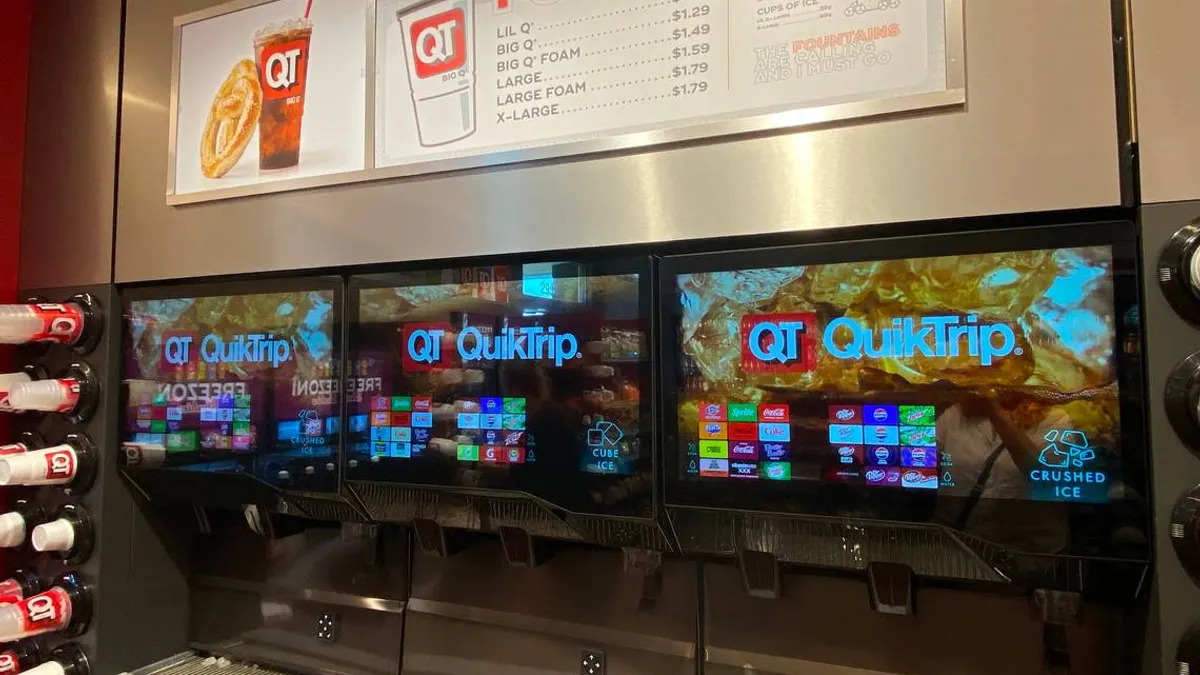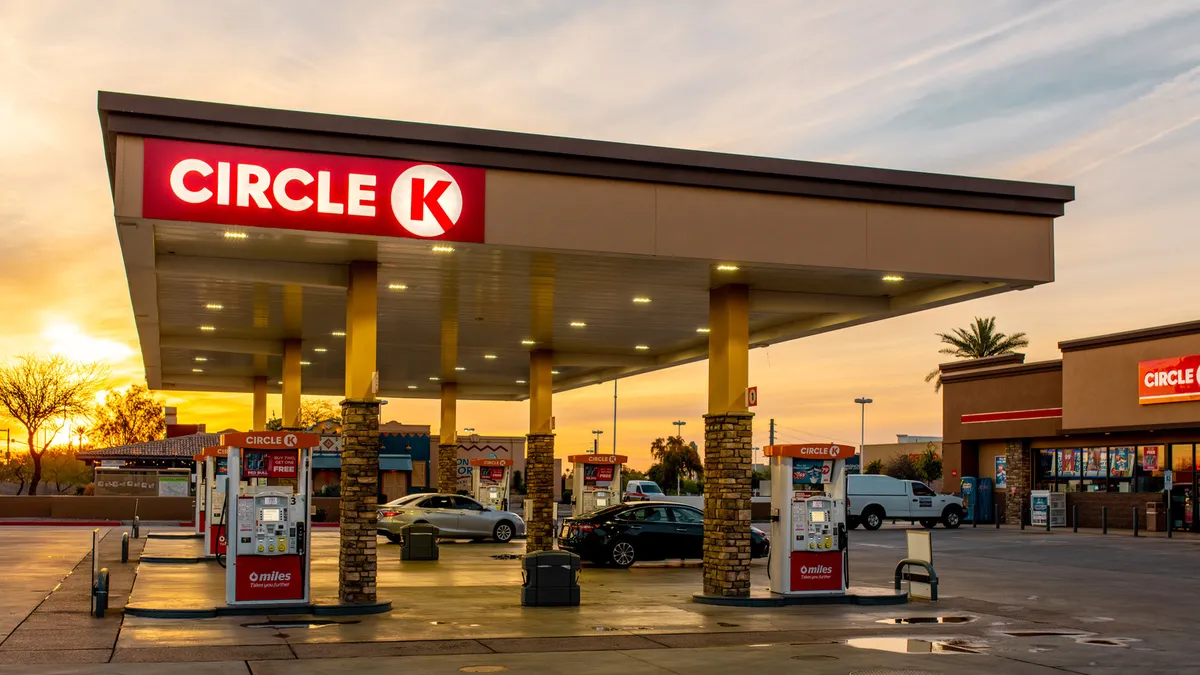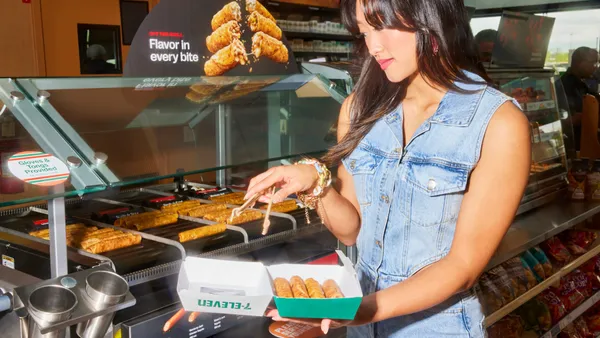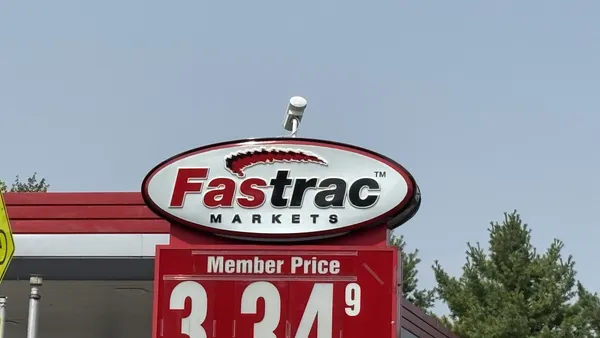Dive Brief:
- Convenience-store operators are facing numerous “existential threats” that have grown more pronounced during the pandemic and necessitate a more food- and omnichannel-focused approach to operating, according to a report published Tuesday by several leading industry analysts.
- The report, part of a globally focused series titled "The Shape of Food Retailing in the New Normal" and led by U.K.-based retail advisor Scott Annan, notes that rising demand for electric vehicles, consumers’ increasing focus on healthy and fresh foods and the rise of online ordering have grown more pronounced recently and threaten to destabilize the c-store industry. “The global fuel and convenience industry is at a crossroads,” Annan said in a press release about the report, while noting that “future opportunities are plentiful for those retailers who recognize that our needs for mobility and food remain interconnected.”
- The report’s findings build upon the considerable strides c-stores have made in recent years to liven up their grocery assortment and drive more trips inside their stores.
Dive Insight:
Convenience stores have begun evolving beyond their “Cokes and smokes” legacy assortment to embrace fresher and healthier foods, bringing them into closer competition with grocery stores. Retailers like Giant Eagle and Hy-Vee have engineered new c-store formats that leverage small size as a quick grocery and meal stop filled with fresh foods, salads, juices and more.
Look for more of this momentum in the years ahead and perhaps a renewed sense of urgency, judging by what the authors of this latest report note. The authors — which in addition to Annan includes convenience-retail analysts Frank Beard and Dev Dhillon, marketing professor Sabine Benoit and former BP Head of Global Retail Darryl Burchell — argue that fueling dollars, which have declined in recent years, will continue to shrink as fuel economy and the use of electric vehicles (EVs) rises.
The recent announcement by GM that it will transition to selling only zero-emission vehicles by 2035 is just the latest sign that a major transition to electric is underway. Although some fuel retailers have begun adding EV charging stations, major fuel companies like BP and Shell have acknowledged that consumers will primarily rely on home charging. This would significantly reduce the regular traffic c-stores have come to rely on for decades.
The report noted that "retailers who pivot their roadside investment from ICE to EV re-charging without a strategic — and much larger — investment in fresh food for today and relevant local services will be disrupted and even disintermediated.”
Fresh foods, meals and a locally relevant assortment are key to drawing in customers, the report notes. Capturing sales across different dayparts, including the three main meals plus snacking occasions in between, will be key. With foodservice, the report outlines an “artisan” approach, which centers on offering locally unique offerings, and an “engineered” approach focused on scalable fare.
The report also notes that c-stores have been slow to embrace online ordering, with many scrambling to sign on with third-party marketplaces in the past year as e-commerce demand rose. As Beard writes, c-stores are now facing the same dilemma over whether to build their own e-commerce platforms or outsource them that grocers are now facing. They’re also facing competition from fast-delivery firms like goPuff and DoorDash’s Dashmart that have assortments centered on impulse buys.
As c-stores move deeper into food assortment and online selling, they’ll need to innovate their loyalty schemes and invest in new inventory management, data gathering and forecasting tools similar to what grocers have adopted. Personalizing offers online and through membership programs will be key, notes contributor Paul Boyle, CEO of Retail Insight. New models have also begun to emerge, including upscale omnichannel players like Foxtrot Market along with Amazon Go. The checkout-free approach pioneered by Go offers an enticing point of differentiation for c-stores, but Boyle said he expects the integration of this pricey technology to be gradual.
The authors, along with numerous CEOs who provided insights for the report, said that c-stores will have to move beyond the “visual” appeal of their stores, as Wawa CEO Chris Gheysens notes, to offer more of a consumer-centric approach.
"Our contention is that while the nature of mobility is most certainly changing, some things do remain interconnected — especially the intersection of mobility and food/beverages,” Beard wrote in an email. “Retailers like Wawa, Sheetz, and seemingly the entire Northern Ireland c-store industry show that it's possible to build an offer that can thrive with or without fuel. Retailers who just swap the pumps for chargers and hope that will keep the traffic flowing to their ‘smokes and Cokes’ offers are likely to face serious disruption.”











